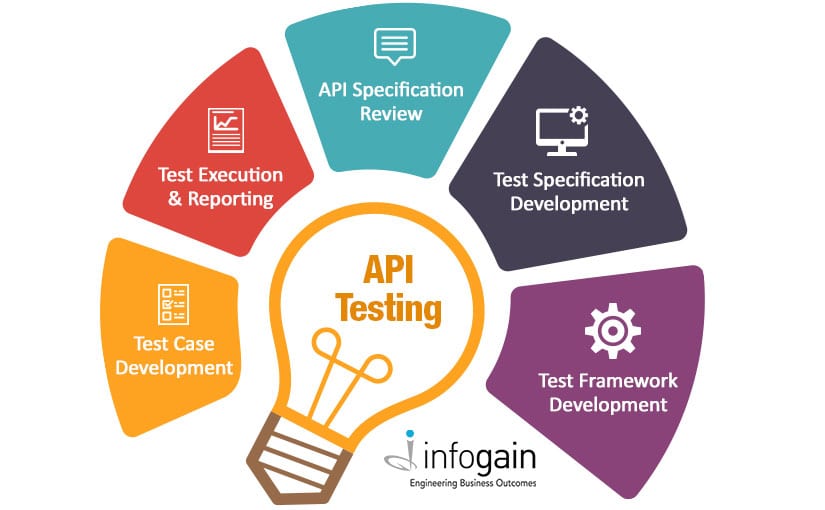- Posted on : October 24, 2018
-
- Industry : Digital and High Technology
- Type: Blog

Author Nilesh Ahire, Senior Consultant – Testing
Gartner and Forrester recommend that testers shift more of their testing efforts to the API level—with the ultimate goal of achieving 80% of functional test automation at the API level. And for a number reasons, API testing is recognized as a better fit for Continuous Testing, Agile, and DevOps.
We hope that this blog will help give a better understanding of how API’s work and what benefits API Testing has to offer.
What is an API?
API is an acronym for application programming interface. APIs are responsible for allowing applications to interact and communicate with other applications. API’s are a set of tools, protocols, standards and code that allow for companies to become more agile, and for everything to work together in a streamlined, integrated way.
What is API Testing?
Once an API is built, it is necessary to test the interface to provide truly secure, reliable and scalable connections between platforms. An API receives requests and sends back responses through internet protocols including HTTP and SMTP.
There are three levels of API testing:
Functional Testing: Provides input parameters in JSON or xml Payload. Functional Testing provides a response code and response body within a millisecond.
Load Testing: Checks performance under load and helps determine how much traffic the system can handle before being overloaded.
Security Testing: Shows which type of authentication is required and whether sensitive data is encrypted over HTTP and includes penetration testing for validating authentication.
Before you start API testing, you need to understand two key types of web service designs that impact it: REST and SOAP services.
RESTful Web services (REST for Representational State Transfer) provides a predefined set of stateless operations and allow requesting systems to access and manipulate textual representations of web resources.
SOAP (Simple Object Access Protocol) is a messaging protocol that allows programs that run on disparate operating systems to communicate using Hypertext Transfer Protocol (HTTP) and its Extensible Markup Language (XML).
Both services have unique sets of benefits, and benefits of SOAP API over REST API:
- Language, platform, and transport independent (REST requires use of HTTP)
- Works well in distributed enterprise environments (REST assumes direct point-to-point communication)
- Standardized and provides significant pre-build extensibility in the form of the WS* standards
- Built-in error handling, Automation when used with certain language products.
Benefits of REST API over SOAP API:
- REST uses JSON architecture which is easier as compare to XML architecture used in SOAP.
- REST can use SOAP web services as it is an architecture and not a protocol like SOAP.
- Speed of REST API is faster as compared to SOAP.
- REST is not that stringent and inherits security measures while SOAP has its own strict standards and defined security measures.
And while API Testing has tremendous benefits it also has a few limitations, such as:
- Parameter Combination: APIs handle communication between systems by assigning data values to parameters and passing those parameters through data requests. All parameter request combinations in the API must be tested for problems pertaining to specific configurations.
- Parameter Selection: Validating the parameters sent through API requests can be challenging. It is imperative to ensure all parameter data uses the correct string or numerical data type, fits within length restrictions, designated value range, and passes other validation criteria.
- Call Sequencing: In many cases, API calls need to appear in a specific order to work correctly. This creates a sequencing challenge for the testing team especially when working with multiple-threaded applications.
- No GUI to help test team to provide input values.
- The test team should have some coding knowledge, be aware of the request and response parameters including error codes and Exception handling function.
Despite the aforementioned limitations that API testing provides several key advantages and is the way into the future of testing.
API testing can improve the coverage of your test cycle, conserve resources, and result in faster, more efficient releases, some of which are:
- API testing allows access to the application without a user interface.
- Testing the core, code-level functionality of the application provides an early evaluation of its overall build strength before running GUI tests, exposing small errors before they become huge problems. Core access also enables testing in tandem with development, promoting communication and improved collaboration between teams.
- API Testing provides easy integrations and is time effective and language independent.
At Infogain we combine automation with intelligence to help enterprises deliver products that are error-free and in line with customer expectations, download our whitepaper on using Predictive Analytics and Advanced Test Automation to Boost Business Assurance.
To know more about Infogain’s Quality Assurance solutions read more here or send us an email at info@infogain.com.






